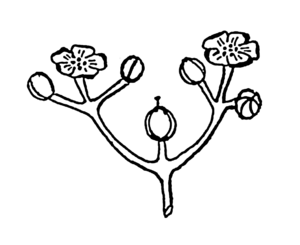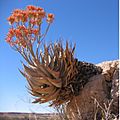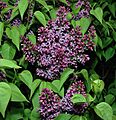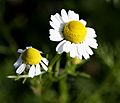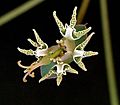Cymose facts for kids
A cymose inflorescence, often called a cyme, is a special way that flowers can grow on a plant. Imagine a main flower stalk. The very first flower to open will be at the top or center of this stalk. After that, new, younger flowers will start to grow and bloom from the sides, below the first flower. This is different from other flower arrangements where the youngest flowers are at the top.
Contents
What is a Cyme?
A cyme is a type of flower cluster where the oldest flower is always at the tip or in the middle. This means the growth of the main stem stops once the first flower forms. New flowers then develop on side branches. This pattern is called "determinate" growth because the main stem's growth is determined (stopped) by the first flower.
How Do Cymes Grow?
In a cyme, the central flower opens first. Then, new flowers grow from buds located below the first flower. These new flowers also stop the growth of their own small branches once they bloom. This creates a pattern where the oldest flowers are in the center or at the top, and the younger flowers are found further out or lower down.
Different Kinds of Cymes
Cymes can look very different depending on how the side branches grow. Here are a few common types:
- Monochasial Cyme (Uniparous Cyme): In this type, only one side branch grows from below each flower. This creates a zig-zag or coiled pattern.
- Helicoid Cyme (Bostryx): If the side branches always grow on the same side, the inflorescence will coil like a snail shell. Think of a corkscrew!
- Scorpioid Cyme (Drepanium): If the side branches grow on alternating sides, the inflorescence will form a zig-zag shape.
- Dichasial Cyme (Biparous Cyme): Here, two side branches grow from below the central flower. These two branches can then also produce two more branches, and so on. This often creates a more symmetrical, branched cluster.
- Polychasial Cyme (Multiparous Cyme): In this type, more than two side branches grow from below the central flower. This results in a very crowded and branched flower cluster.
Why Do Plants Have Cymes?
Plants develop different types of inflorescences, like cymes, to help with pollination and seed dispersal. The way flowers are arranged can make it easier for insects, birds, or wind to carry pollen from one flower to another. For example, having the oldest flowers open first might attract pollinators early, while younger flowers continue to develop and open later.
Images for kids
-
Inflorescence of sessile disc florets forming the capitulum
-
Bracteate inflorescence of Pedicularis verticillata.
-
Leafy-bracted inflorescence of Rhinanthus angustifolius.
-
Solanum lycopersicum (concaulescence)
-
Tilia cordata (recaulescence)
-
Plantago media (spike)
-
Dipsacus fullonum (head)
-
Alnus incana (ament)
-
Hypericum perforatum (bostryx)
-
Canna sp. (rhipidium)
-
Hebe albicans (heterothetic compound raceme)
-
Vitis vinifera (panicle)
-
Sambucus nigra (cymose corymb)
-
Achillea sp. (heads in a corymb)
-
Hedera helix (umbels in a panicle)
-
Matricaria chamomilla (calathid)
-
Triticum aestivum (compound spikes, "spikes")
-
Oryza sativa (spikes in a panicle, "panicle")
-
Ficus carica (syconium)
-
(Coleus-false spike)


